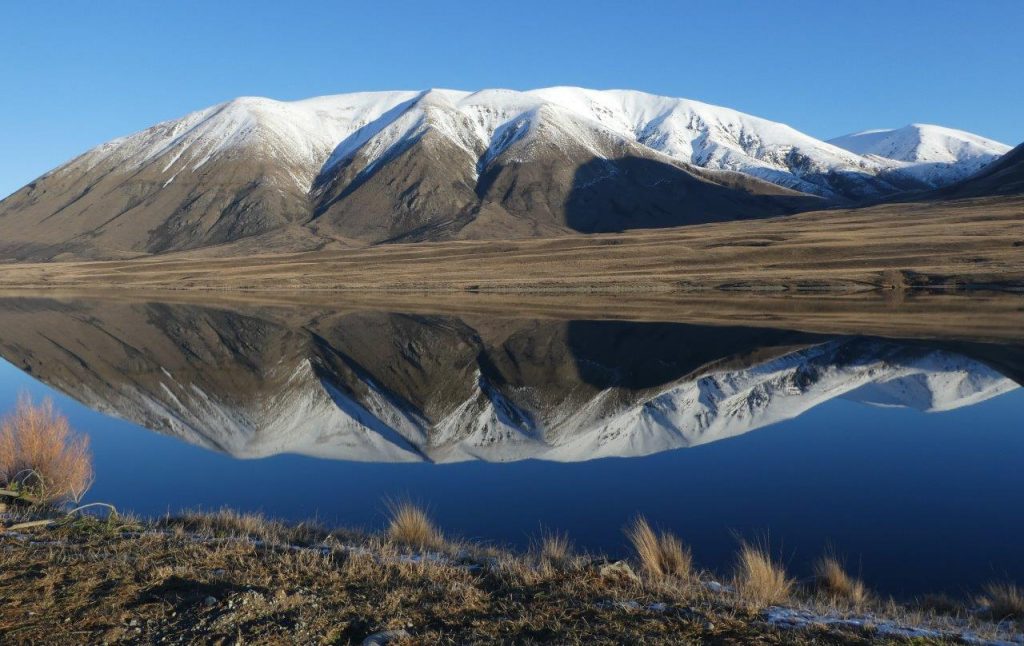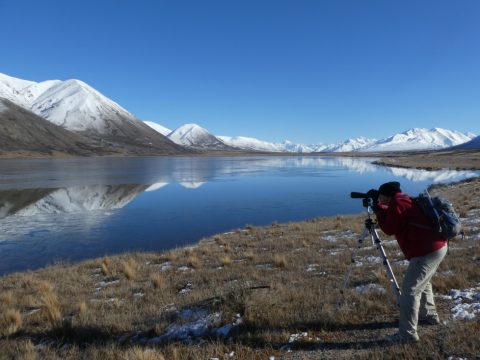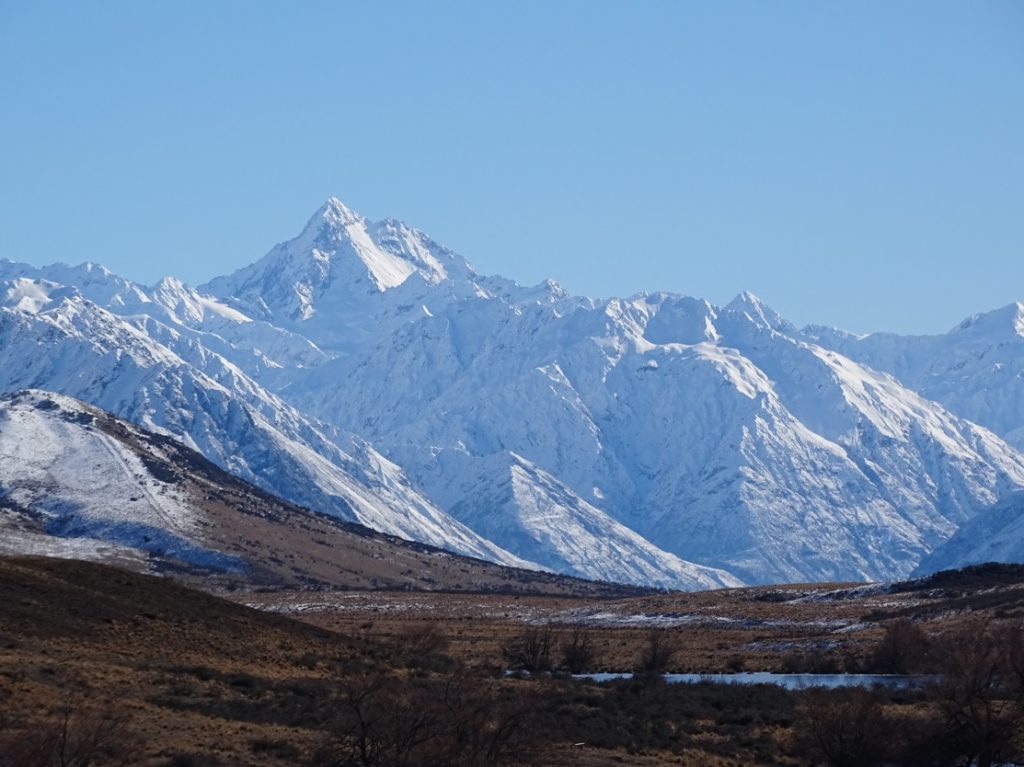Ashburton’s annual winter bird count
Every year, a group from Forest & Bird’s Ashburton Branch gather to count the birds on lakes around the region.
Val Clemens wrote this summary of the day, with breathtaking pictures from Edith Smith.

Looking north across Lake Clearwater.
Conditions were perfect for the Annual Winter Bird Count at the Ashburton Lakes on 29th July, after postponement the previous Saturday. About 20 people met at Mt Somers village early and the lake areas were assigned to small groups.
The clear crisp air, cloudless blue skies, still lakes and snow cover on hills and mountains resulted in stunning views in every direction. Some lakes were partially iced over, concentrating water birds in smaller areas. Depending on the numbers present, this can make the counting easier – or more difficult if there are many of one species clumped together.

Len, spotting birds on Lake Clearwater.
Ashburton Forest & Bird have coordinated the Winter Bird Count for over 25 years. The data on the 30 species of birds found in the area is collected by Colin O’Donnell, DOC ornithologist, and provides a valuable resource for decision makers.
Ashburton KCC (Kiwi Conservation Club) members joined in during the afternoon and learned some bird identification skills and how to use a spottoscope.
As usual Neville Adams provided a plate of his wonderful warming soup at the bach at Lake Clearwater. Numbers were collected and all agreed they were very lucky to have had such a wonderful day in our beautiful high country.
– Val Clemens

Mt D’Archiac, west of Lake Clearwater.
The DOC Ornithologist, Colin O’Donnell, had these observations from the bird count:
- Counts started in 1984 – making this year number 34. Its now one of the longest running bird count data sets in New Zealand.
- This year was a good count with 4,128 wetland birds counted across 12 lakes.
- A highlight was seeing an Australasian bittern (a critically endangered swamp bird) at Lake Heron.
- It was an above-average count for crested grebes, one of the iconic threatened species that occurs on the lakes; 26 were counted, with 24 of them at Lake Heron.
- There were good numbers of little shags (121), a species that has slowly been increasing, indicating that small fish populations are probably healthy.
- Numbers of most waterfowl (ducks and swans) have been fluctuating over recent years.
- The most numerous duck is the NZ scaup, a native duck characteristic of the high country. 2,228 were counted, which is up from the last two years.
- Only paradise ducks are increasing; they have benefited from increased pasture from more farming in the basin.
